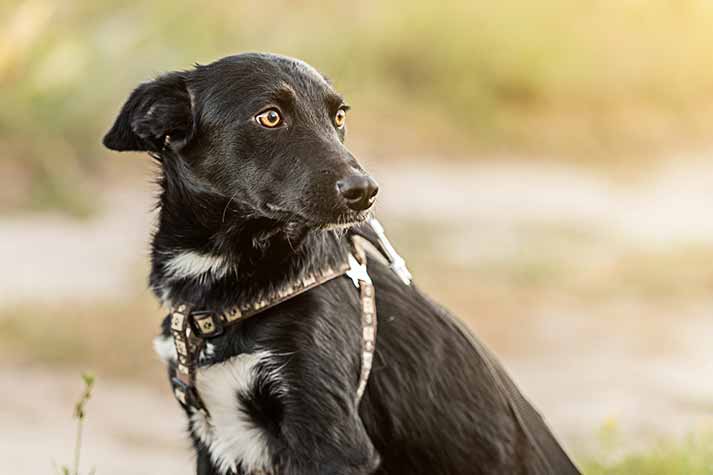
25 Nov
Can Dogs Get Dementia? Symptoms, Causes, and How to Help Your Senior Pet
Aging is a natural process that affects all living beings, including our beloved pets. While aging brings wisdom, grace, and memories, it also comes with its own unique challenges. For senior dogs, one of these challenges can be dementia, a condition that mirrors Alzheimer’s disease in humans.
Understanding the signs, causes, and management of canine dementia can make a world of difference in ensuring your furry friend remains comfortable and happy in their golden years. Here’s everything you need to know about dogs and dementia.
What is Canine Cognitive Dysfunction Syndrome (CCD)?
Canine Cognitive Dysfunction Syndrome (CCD) is a condition where a dog’s cognitive abilities such as memory, learning, and problem-solving decline due to aging. It's essentially the canine equivalent of dementia and is most seen in older dogs.
As dogs age, their bodies undergo several changes:
- Weakened vision and declining eyesight.
- Development of joint problems and potential heart diseases.
- A gradual decline in mental sharpness and memory.
Age is the primary risk factor for CCD, with symptoms becoming more visible and severe as dogs age. Recognizing these signs can help slow the progression of the disease and improve your pet’s quality of life.
Symptoms of Dementia in Dogs
The symptoms of CCD can disrupt your dog’s daily routine, but many of these signs are mistakenly attributed to normal aging. To simplify diagnosis, experts have created the acronym “DISHAA”, which outlines the primary indicators of canine dementia.
- Disorientation:Your dog may act confused, get lost in familiar places, or struggle to find their way around the house.
- Interaction Changes:Social behavior may shift, including changes in how they interact with people or other animals.
- Sleep/Wake Cycle Alterations:Dementia can lead to agitation, restlessness, and trouble falling asleep or staying asleep.
- House-soiling, Learning, and Memory Issues:Forgetting basic training, such as house-training, is a common sign. Your dog might have accidents indoors even though they were previously well-trained.
- Altered Activity Levels:Increased anxiety, restlessness, or dramatic shifts in energy levels; either higher or lower than usual can indicate cognitive decline.
- Anxiety:Your dog may appear more anxious or stressed, particularly when symptoms like disorientation are present.
Other Observable Behavioral Changes
In addition to the DISHAA symptoms, other changes to watch for include:
- Persistent barking, often at night.
- Reduced interest in food or eating habits.
- Wandering aimlessly.
- Difficulty recognizing familiar people, pets, or places.
- Loss of previously learned behaviors, such as responding to commands.
- Irritability or aggression.
- Less interaction with family members.
If your dog starts showing any of these signs, consult your veterinarian. Early diagnosis can greatly improve your ability to manage the condition.
What Causes Dementia in Dogs?
While researchers are still working to fully understand the causes of CCD, the condition is linked to aging-related changes in the brain, such as:
- Brain cell loss: Aging means older dogs lose brain cells faster than they can replenish them, which affects the functioning of the brain, especially in areas associated with memory and learning.
- Reduced neurotransmitter activity: A decline in nerve signaling can impact a dog’s ability to think, learn, and respond to stimuli.
Although these changes are natural with age, some dogs experience them more severely than others, leading to CCD. Given how these changes can be mistaken for natural cognitive decline, it is important to look out for them and keep an eye on any sudden changes in mood, behaviour, or temperament.
Treatment and Management of Canine Dementia
Unfortunately, there is no cure for dementia in dogs. However, with proper care, you can slow its progression and make your pet more comfortable.
Tips for Managing CCD in Dogs
- Exercise: Regular physical activity keeps your dog’s mind stimulated and improves overall well-being. Stick to familiar routes for walks and maintain a consistent routine to reduce disorientation and anxiety.
- Establish a Routine: Predictability is key for dogs with dementia. Keeping their feeding, exercise, and playtimes on a set schedule can help minimize confusion and stress.
- Create a Safe Environment: Make your home dementia-friendly by making some simple modifications. Use baby gates to block off dangerous areas like stairs. keep food, water bowls, and toys in the same place to ensure familiarity, and avoid unnecessary rearrangements of furniture or belongings.
- Encourage Mental Stimulation: Interactive toys, puzzle feeders, and regular playtime can help keep your dog’s brain active. Short training sessions can also be beneficial, even for older dogs.
- Veterinary Support: Medications and supplements may be recommended by your vet to support brain health and slow cognitive decline.
- Address Anxiety:Soothing environments, calming products like pheromone diffusers, and gentle reassurance can help ease your dog’s anxiety.
End-of-Life Care Considerations
As dementia progresses, some pet parents may face difficult decisions about their dog’s care. Dementia is not life-threatening on its own, but it can significantly impact a dog’s quality of life. Consult your vet to understand your options and ensure your pet’s comfort. Some challenges, like traveling with your pet or visiting new places, may become increasingly difficult. Always consider your dog’s mental and physical well-being when planning activities.
Making Life Easier for a Dog with Dementia
While CCD is a heartbreaking reality for many senior dogs, your love and care can make all the difference. By understanding their condition, maintaining a consistent routine, and seeking veterinary support, you can help your pet enjoy their golden years with dignity, grace, and comfort.
Aging may be inevitable, but with the right steps, your furry companion can continue to feel safe, loved, and cherished every step of the way.






AUTHOR’S BIO
Carry My Pet
Passionate pet enthusiasts and globetrotters, dedicated to easing furry friends' journeys worldwide. Penning tales of compassion at CarryMyPet, where every relocation is a tail-wagging adventure.